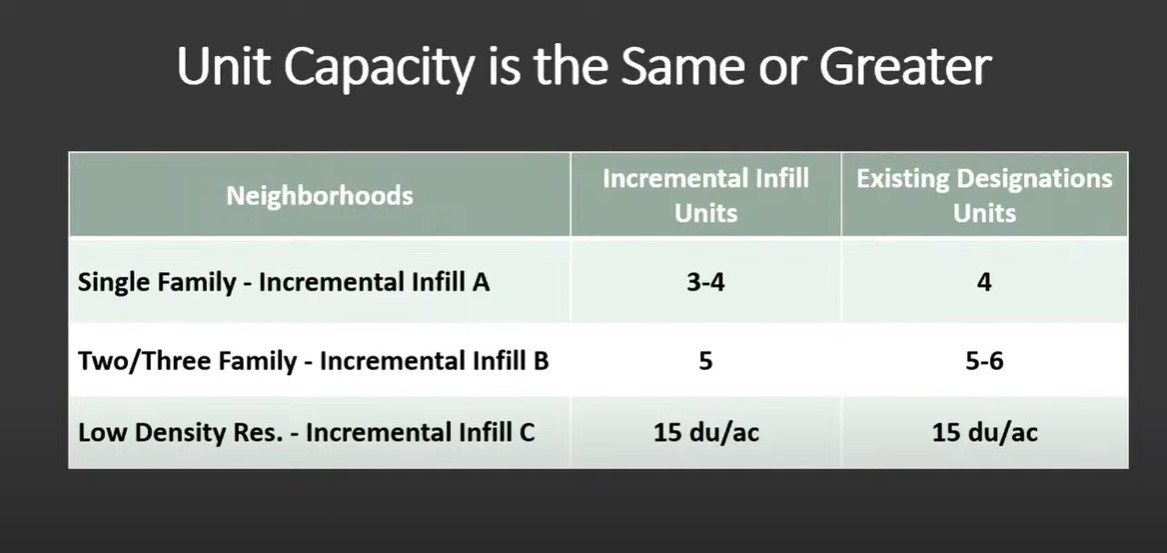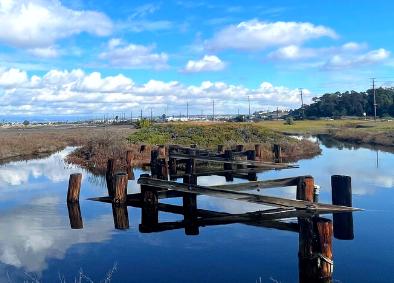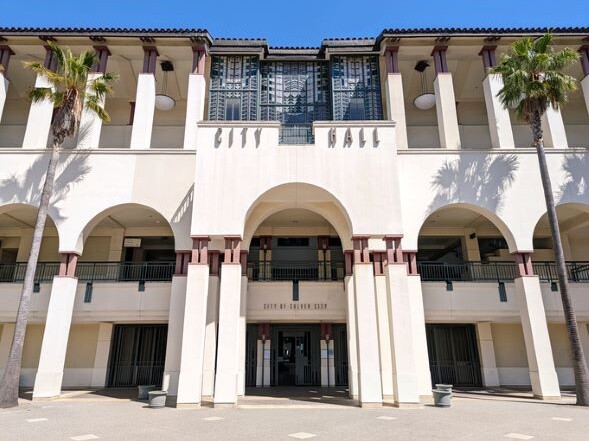With Vice Mayor Yasmine McMorrin absent, the Culver City Council made several decisions related to parks, traffic, and housing at Monday night’s council meeting. Approval was given to begin a study for the refurbishment of both Bill Botts Park and Veterans Memorial Park, recommendations to change speed limits were evaluated, and a motion to potentially insert inlays into the city’s housing code was rejected.
Here is what you need to know:
Bill Botts and Veterans Memorial granted feasibility study
Both the city council and the general public acknowledge the need to renovate parks in Culver City. It’s the way that a proposed motion Monday evening approaches that problem that is the cause of some disagreement.
A motion to grant a feasibility study to Johnson Favaro, LLP for an amount no greater than $298,939 was accepted, but councilmember Freddie Puza recused himself from the vote, citing his misgivings with this approach.
“I would have liked to have seen a more equitable approach by doing the [Parks] Master Plan first to assess the needs of each of the parks,” Puza said.
Councilmember Dan O’Brien explained that the reasoning for this feasibility study was to improve the only two parks considered city-wide or “regional” and are the two most heavily used parks. He noted that other parks need refurbishment as well, but Veterans Park in particular is important because of amenities like the community center and pool present there.
“We need to look at this with fresh eyes,” O’Brien said, “And think about building two facility-type locations that serve the entire community.”
This feasibility study is meant to analyze ways to renew and refurbish the park and is expected to be done from September to March 2024. It will include an analysis of the parks in comparison to regional best practices while also designing potential installations and landscaping changes to improve the parks at several different price tiers for the council to consider.
With Puza’s recusal and McMorrin’s absence, the motion to approve the feasibility study was passed 3-0.
New Study recommends speed limit changes, but new law may cause conflict
The study — which was submitted to the city in a letter dated August 14 — is an analysis of 62 corridors across the city and the traffic that runs through them. The details tracked include roadway characteristics like the presence of sidewalks, driveways, and on-street parkways; operating characteristics like the 15th, 50th, and 85th speed percentile of vehicles traveled along the corridor, and a detailed crash history from 2018 to 2020.
Along with these findings were listed speed limit recommendations — the main focus for meeting discussion. These recommendations were posted for each corridor alongside reasonings and compared to a 2013 study that several public commenters referenced when noting their displeasure.
There are several corridors where the 2023 recommended speed limit is higher than what was recommended in 2013, including Culver Boulevard from the city limit near Sawtelle Boulevard, and Elenda Street and Culver Boulevard from Duquesne Avenue to the city limit at Washington Boulevard/Canfield Avenue.
There were five corridors that were recommended a lower speed limit than currently posted: Culver Boulevard from Overland Avenue to Duquesne Avenue, Duquesne Avenue from Washington Boulevard to the city limit near Jefferson Boulevard, Higuera Street from Lucerne Avenue to Hayden Avenue, McLaughlin Avenue from the city limit near Washington Place to the city limit near Washington Boulevard, and Sawtelle Boulevard from the city limit near the 405 bridge and Washington Boulevard.
The original motion presented at the meeting was to accept the study and adopt the recommended speed limit changes, but Mayor Abert Vera noted that Assembly Bill 43 — which sets separate speed limit guidelines for the state — might affect what the city is able to do. Therefore, the motion was changed to sending the study to the Bicycle and Pedestrian Advisory Committee (BPAC) to have them explore how to implement the suggestions in the study while maintaining AB 43 compliance.
Incremental infill rejected by Council in favor of SB9, ADUs
As part of the efforts to further encourage the generation of affordable housing units in the city, one proposal that the city explored was incremental infill, which would allow for development in areas that normally could not see it, namely single-family neighborhoods.
However, this discussion regarding incremental infill started before several crucial state laws, and the council deemed the zones unnecessary at Monday’s meeting in the wake of these new laws.
There were three different incremental infill overlays — labeled A, B, and C — presented by city staff in their presentation. Category A would apply to single-family neighborhoods and would allow three or four unit-buildings to be built in these areas based on the lot size. These units would have to be of equal size and the fourth unit of a building would be required to be affordable.
Category B would apply to duplex and triplex neighborhoods and would allow five units available and Category C applies to lower-density neighborhoods with multifamily housing and would allow five or six units, but none can be required to be affordable.
The idea for incremental infill has gone before several bodies including a prior presentation to the city council. However, it was developed prior to Senate Bill 9 — the California Housing Opportunity and More Efficient Act — which changed the process and requirements for creating duplexes or subdividing existing lots. Under this law, up to four units can be built on lots in neighborhoods with single-family housing.
However, SB 9 allows for more flexibility in design choices, including allowing attached and detached units in single-family neighborhoods and allowing changes to the lot footprint, but the state is not allowed to require affordability for any of the units. Staff noted that overall, current designations under SB 9 would allow for more units overall than the proposed incremental infill.
This point was not lost on council members, who felt it would be best to simply follow SB 9 regulations. The council eventually voted unanimously to remove the incremental infill language entirely.
“We have a state law, SB 9, and it’s the law of the land, and I think we should live by that.” councilmember Göran Eriksson said.
“I think it is imperative that we are as consistent as possible with the state,” Mayor Vera said. “As much as I am for local control, the state was on to something in terms of the protections afforded through SB 9. I think that’s important.”
Image from Staff Report
Stay informed. Sign up for The Westside Voice Newsletter
By clicking submit, you agree to share your email address with Westside Voice. We do not sell or share your information with anyone.








